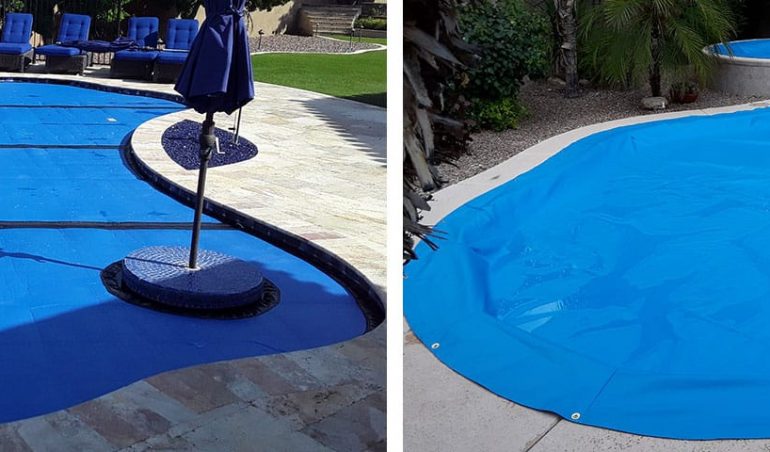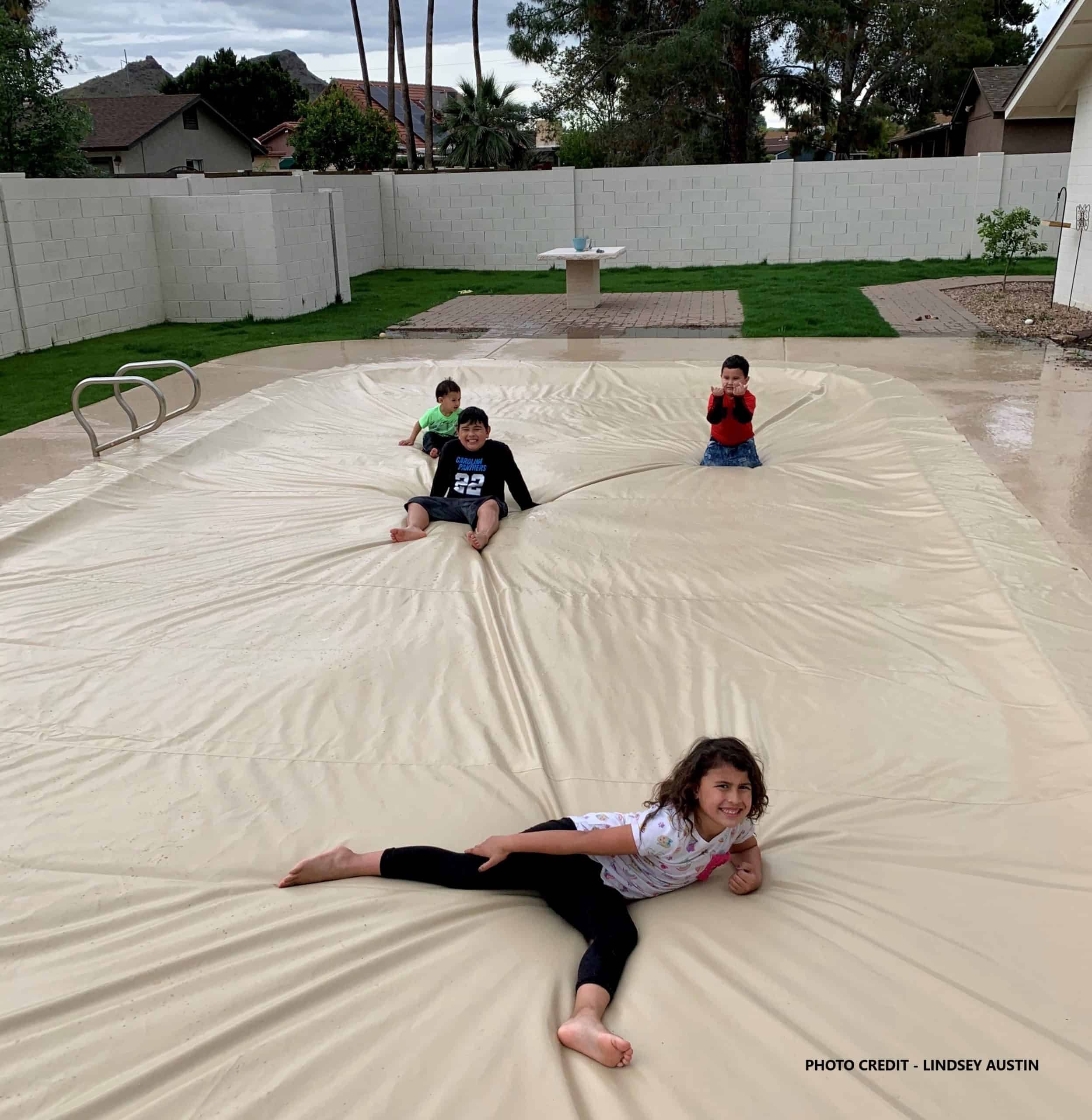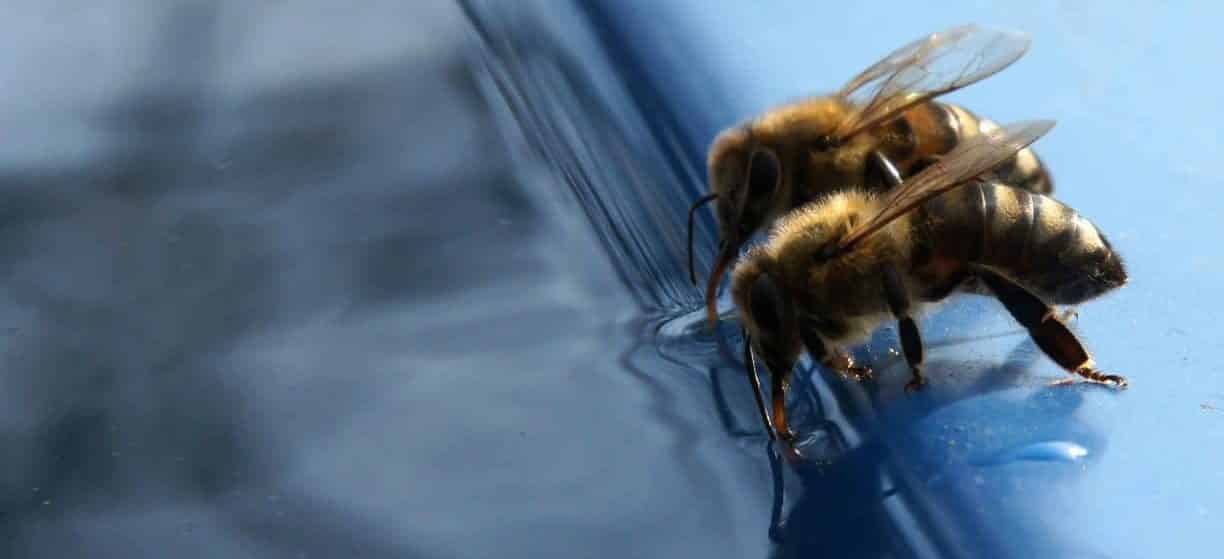Many pool owners have never even entertained the idea of a pool cover, mainly due to lack of understanding and proper knowledge of the product types available.
Pool covers fall into two basic categories – those that provide safety and non-safety covers. Below we have outlined some basics related to each type of pool cover to help educate potential pool owners about what is available, allowing you to determine which may work best for your specific needs.
Safety Pool Covers
Often, the main reasons homeowners look into getting a pool cover is because they need one for safety purposes. For households with babies or young children present, ensuring their safety and well-being in all areas of the home is paramount. New home builds typically require a safety barrier of some kind be installed around outdoor pools and spas. There are a variety of safety devices available from exterior door alarms, to latching gates and pool fences – each with their own set of pros and cons.
In Arizona, every municipality, city, and jurisdiction have their own individual barrier code requirements for new builds, and it is the homeowner’s responsibility to familiarize themselves with these requirements to ensure the safety of their property. Some cities require simple measures like a locking gate, while others may require more intricate measure like the installation of an automatic pool cover that can be activated at the push of a button. Costs for these different types of safety devices vary greatly, so be sure to do your research to determine what is required for your specific locale that will also meet your safety needs.
Automatic pool covers are typically installed as the pool is being built, as they require a track system that is permanently installed into the decking surrounding the pool/spa edges. In addition to the tracks and cover material, there is a motor which powers movement of the cover along the tracks, a pulley system for bi-directional motion of the cover, and a vault area the cover retracts into. With all these mechanical parts, automatic pool covers can bring added headache when it comes to maintenance. Plus, the costs of automatic covers are typically 3-4 times that of manual types due to the extra labor involved with installation and added component costs. However, their ease of use cannot be argued since the cover can be engaged at the touch of a button. Keep in mind, if any of the system components should fail rendering the cover inoperable, you have lost your ability to keep your pool safe.
Mesh covers are a more cost-effective safety solution and the type most people are familiar with as they are widely used across the country, especially in the Midwest & Northeast (which have very different climates than Arizona!). Mesh covers are typically made in standard stock sizes and held in place with tension springs or hooks that attach into holes placed around the perimeter of the pool. The mesh is manually stretched tight across the pool surface, often covering parts of the decking as well in instances where a pool shape is irregular or free-form (non-rectangular). While they fully cover the pool surface to prevent access to water, mesh covers are not made of solid material. This means while they do provide safety, they do not block out the sun to prevent water evaporation or chemical burn off. They also do not prevent dust or small pieces of debris from getting into the pool water. In Arizona, strong sun and blowing dust are commonplace, which can make a mesh cover less desirable.
Vinyl covers are another type of safety solution, which also offer added benefits in terms of maintenance and customization. Vinyl covers can be customized to fit any pool shape or size and accommodate special pool designs having raised edges or spas, boulders or water features. These types of covers anchor down around the pool perimeter creating a solid barrier across the pool surface which can be walked on in safety situations where a child or pet may find their way onto the cover. An opaque vinyl cover will also fully block out the sun to drastically reduce water evaporation and chemical usage. Since a solid vinyl cover creates an unsurpassable barrier, not only eliminating access to pool water for the safety of children and pets; it also stops any small particulates like dust and tree debris from entering the pool. The solid material also helps amplify the solar energy from the sun, transferring the heat to the pool water beneath the cover, helping warm the pool without use of a heater. This is a helpful benefit to those looking to extend their swim season without having to invest in the added cost of a pool heating system.
Non-safety Pool Covers
For some homeowners, safety is not a concern with their pool or they do not like the idea of anything anchoring down into their pool decking. When safety is NOT a factor, there are other reasons pool owners consider purchasing a cover. Two major reasons are maintenance – to help keep debris from entering the pool; and warmth – to either retain the heat they are adding to their pool water with a separate heating system, or to warm up the pool water through solar collection, using the sun’s energy to warm the water.
Bubble covers are the cheapest and most readily available type of covers on the market. Most often bubble cover come in stock sizes or rolls that can be cut to size by the purchaser, and made from plastic sheets infused with small air-pockets or “bubbles” which allow the cover to float and collect heat. While bubble covers can help reduce evaporation and keep out some dirt and debris, they still allow small particles to enter around the pool edges. Since they are made of a lightweight plastic, they can also blow off in regions with high wind allowing debris to enter your pool. Bubble covers rest on the surface of the water allowing UV rays to enter and heat up the top layer of pool water to assist in keeping your pool warmer to extend your season and/or trap the heat in, if being used on a heated pool in cooler seasons. With this warming action however, bubble covers often aid in promoting algae growth since most bubble covers are not opaque to block UV rays. Sunlight + heat + organic material = a recipe for algae growth; which is a common complaint with bubble cover owners. Also, because the plastic is continually exposed to the elements, they generally last only a year or so before the plastic begins to degrade from ongoing sun/heat exposure and direct contact with pool chemicals. If not replaced in a timely manner, those plastic bits can then drop into your pool causing issues with your pool’s filtration system. Although safety may not be a concern for those wanting a floating cover, bubble covers pose serious safety risks should a pet or person fall atop the cover. Their weight will pull the cover downward, quickly wrapping them in the cover leaving them unable to move their limbs. If you are unable to move your limbs when you are underwater, you can imagine what happens next. If considering a bubble cover, please keep this potential drowning risk in mind.
Thermal covers or “blankets” also float atop the pool water surface like a bubble cover. However, they are made from much different materials, typically high-density foam which provides superior insulating qualities and longer durability. Thermal blankets can also be purchased in stock sizes, but higher-end thermal pool covers can be custom tailored to your specific pool shape and fabricated to maximize ease of removal for those who are frequent swimmers or may have physical challenges with taking a cover on/off. Other benefits of thermal covers are they will help reduce water evaporation and chemical usage. Plus, with a custom fit cover, the likelihood of debris entering through edges or gap areas is minimized. Their opaque material will also block out the sun’s UV rays which negates the promotion of algae growth. The dense foam material is highly effective at retaining pool water temperature due to the “R” factor of the insulating material, making for excellent use during cooler winter months to trap heat within the pool water. Although thermal covers are not designed for safety, foam thermal covers are more rigid than the plastic used in bubble covers providing higher buoyancy, so should a person or pet fall atop a thermal cover, it would be similar to landing on a thin raft or pool noodle. You’ll float for a bit, but not get become enveloped in the cover material.
There are many options available when purchasing a pool cover. To ensure you are investing in the type of cover that will work best for your lifestyle needs, while also having the features you are most looking for, a consultation with a pool cover expert should be one of your initial steps. Pool cover installers are familiar with the array of benefits that different pool cover types offer and can provide you with guidance and advice for which will work best for your particular pool and the goals you are looking to achieve with a pool cover.
Thinking about getting a Pool Cover in Phoenix or Tucson Arizona? Give a call for a FREE Consultation on the best Pool Cover for you.






